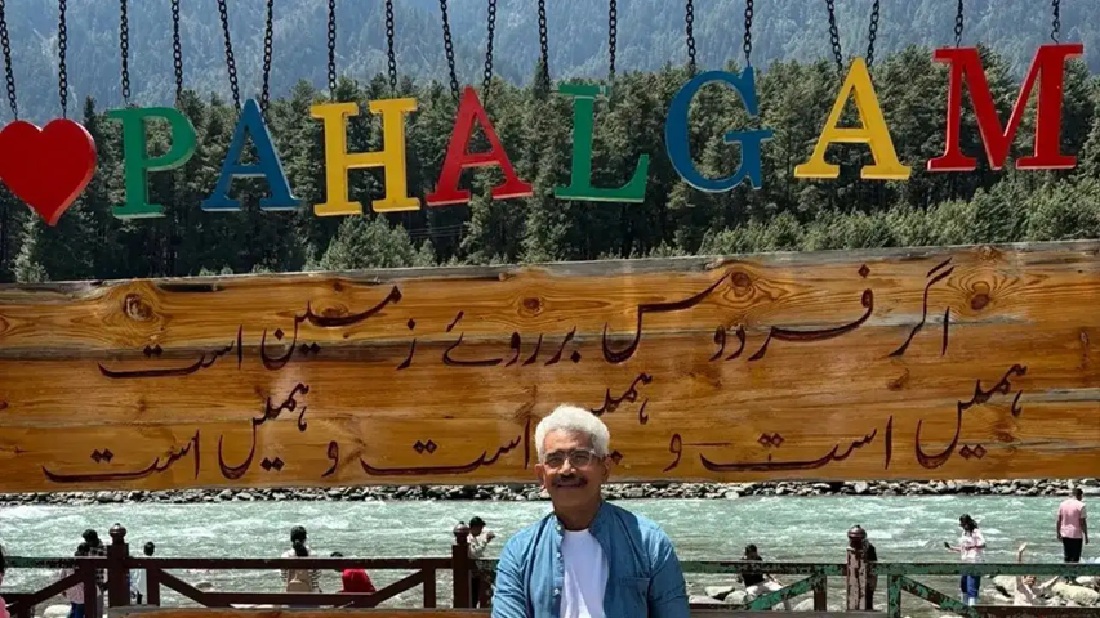What comes next in Kashmir after Pahalgam attack? Here’s what you need to know about media narratives, government crackdowns, and rising tensions.
The attack that killed 26 tourists in Indian-administered Kashmir last week was not just an act of terror. It was a wake-up call—one that shattered the narrative Prime Minister Narendra Modi’s government had spent years constructing: that Kashmir was safe, open for business, and back to normal.
Illusion of normalcy in Kashmir?
What does “normal” even mean in a place where journalists are gagged, dissent is silenced, and civil liberties are under threat? Instead of answers, the Indian government has responded with calls for retaliation. Over 1,500 Kashmiris have been arrested, homes of alleged suspects demolished—a crackdown that appears less about justice and more about sending a message to the Indian public: vengeance will be served, no matter the cost.
India’s mainstream media has largely echoed the government’s line, churning out hyper-nationalistic rhetoric, sensationalism, and fear-mongering. Too busy demanding revenge to ask the most basic questions: How did this happen?
The Failed Rebranding of Kashmir After Pahalgam Attack
For the past decade, Jammu and Kashmir had undergone a rebrand. Under Modi’s government, the region—long a disputed territory between India and Pakistan—was marketed as a tourist hotspot. “Maximum terrorism, maximum tourism,” the paradoxical slogan went. The valley, once seen as a hotbed of radical Islamist terror, was now being portrayed as a diplomatic hub.
That illusion was shattered on April 22, when a surreal selfie video recorded by a tourist on a zipline captured a horrifying attack. Twenty-six tourists, almost all of them Hindu, were chased down by militants and executed.
“They not only came deep inside Indian territory, they also took their time segregating people based on religion before killing the Hindus,” one observer noted. The attack exposed the fragility of the government’s claims. Tourism had been central to the “normalcy” narrative—yet Kashmiris knew the calm was superficial. “There was always tension underneath,” said a local.
Government Crackdown in Kashmir After Pahalgam Attack
The Modi government’s approach to Kashmir has been clear: alter its demography. In 2019, India revoked Article 370, stripping Kashmir of its semi-autonomous status. The electoral map was redrawn, boosting Hindu-majority Jammu’s political influence at the expense of the Muslim-majority Kashmir Valley. New laws loosened restrictions on non-Kashmiris settling in the region, raising fears of permanent demographic change.
Meanwhile, journalists face increasing suppression. Dozens have been arrested under anti-terror laws, charged with sedition, and repeatedly jailed. Civil society has been decimated. “There is a larger collective punishment happening,” said one analyst. “Houses are demolished without investigation, instilling fear in the population.”
Media War and Rising Islamophobia
Indian media’s response has been jingoistic. Channels like Republic TV, Times Now, and India Today have turned the Kashmir after Pahalgam attack into a rallying cry for war. “Bharat is getting battle-ready for revenge,” screamed one headline. The focus? Not security failures, but demands for military retaliation against Pakistan.
There’s also a worrying spike in Islamophobia. The attack has been weaponized to target Indian Muslims, particularly Kashmiri students, many of whom have fled amid threats. “This monster is a creation of the government,” said one critic. “Now, can they control it—or do they want to promote it?”
Pakistan’s Denial and Mockery
Across the border, Pakistan’s military-controlled media has dismissed India’s allegations. The ISI’s chief spokesperson called the claims “baseless,” presenting an allegedly intercepted conversation as proof—a clip widely mocked as scripted. Pakistani news channels have amplified military talking points, mocking Indian threats and reminding the world of Pakistan’s nuclear capabilities.
Yet, social media tells a different story. Pakistani meme-makers satirize Indian war rhetoric, joking that India couldn’t possibly do more damage than Pakistan’s own leadership already has.
The Global Parallel: Trump’s Meme Politics
Meanwhile, 100 days into Donald Trump’s second term, his administration’s communications have taken a brutal, meme-driven turn. Trade tariffs, mass deportations to El Salvador, and threats of annexation dominate his agenda—all packaged in viral, often cruel, social media posts.
Trump’s team, led by former UFC communications director Steven Chung, employs a confrontational style. Official White House accounts now share dehumanizing content—like a Japanese-animation-style rendering of a weeping drug trafficker—blurring the line between governance and shock-value propaganda.
Amnesty International warns that Trump has “turbocharged authoritarianism” globally, dismantling human rights safeguards and emboldening strongmen. Yet, as one analyst notes, “Trump isn’t an aberration—he’s the unmasking of illiberal tendencies deep in America.”
Conclusion
In Kashmir, the cycle of violence, suppression, and propaganda continues. The Indian and Pakistani media, each serving their national narratives, fuel tensions rather than seek solutions. Meanwhile, Trump’s America embraces a politics of spectacle and cruelty.
The question remains: Will accountability ever come—or will rage and revenge keep driving the narrative?

